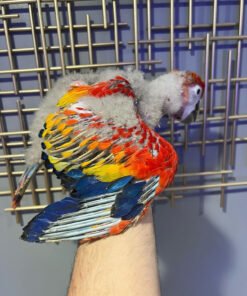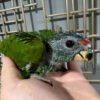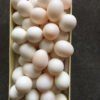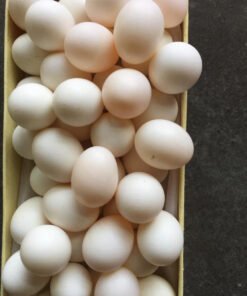Baby Scarlet Macaws
$1,100.00
Length: 18-22inches
Weight: 600-800g
Banded: Yes
DNA tests: Yes
Sex: Male
Origin Of Scarlet Macaws
Baby Scarlet Macaws, known for their vibrant red, yellow, and blue plumage, are native to Central and South America. They can be found in parts of Mexico, Guatemala, Belize, Honduras, Nicaragua, Costa Rica, Panama, Colombia, and Ecuador. These majestic birds inhabit tropical rainforests, woodlands, and palm groves, where they can soar through the canopy with grace and beauty. With their striking colors and impressive size, Scarlet Macaws are not only visually stunning but also play a crucial role in the ecosystem as seed dispersers. Their presence in the wild adds a touch of brilliance and elegance to the rich biodiversity of their natural habitats.
Scarlet Macaws have a rich history deeply intertwined with the lush landscapes of Central and South America. These magnificent birds have been revered by indigenous cultures for centuries, symbolizing beauty, strength, and spirituality. In regions like the Amazon Rainforest, Scarlet Macaws hold cultural significance and are often depicted in art and folklore as powerful symbols of vitality and freedom. Their presence in the wild is not only a testament to the stunning diversity of avian life in the region but also a reminder of the delicate balance of nature that sustains these vibrant creatures. Through conservation efforts and habitat protection, we can ensure that future generations continue to marvel at the awe-inspiring beauty of the Scarlet Macaw.
Temperament
Scarlet Macaws are known for their intelligent and social nature. They are highly affectionate birds that form strong bonds with their human caregivers if raised in captivity. In the wild, Scarlet Macaws are often seen in pairs or small family groups, displaying complex social behaviors and communication skills. These birds are playful, curious, and can be quite vocal, using loud calls to communicate with each other.
However, it’s important to note that Scarlet Macaws require a lot of mental stimulation, space to fly, and social interaction to thrive. Without proper care and attention, they can become bored, stressed, or develop behavioral issues.
Overall, Scarlet Macaws are fascinating creatures with vibrant personalities, making them popular pets for experienced bird owners who can provide the time, resources, and expertise needed to meet their complex needs.
Scarlet Macaws As Pets
Keeping Baby Scarlet Macaws as pets can be a rewarding experience for those who are dedicated to meeting their needs. These birds are known for their striking beauty, intelligence, and playful personalities. However, there are some important considerations to keep in mind before bringing a Scarlet Macaw into your home:
1. Space: Scarlet Macaws are large birds and require a spacious cage or aviary to move around freely. They also need plenty of time outside of their enclosure to stretch their wings and exercise.
2. Socialization: Scarlet Macaws are social creatures and thrive on interaction with their human companions. They require daily socialization, mental stimulation, and training to prevent boredom and behavioral issues.
3. Diet: A well-balanced diet is crucial for the health of Scarlet Macaws. Their diet should consist of high-quality pellets, fresh fruits, vegetables, nuts, and seeds. It’s important to avoid foods that are toxic to birds, such as avocado and chocolate.
4. Veterinary Care: Regular check-ups with an avian veterinarian are essential to ensure your Scarlet Macaw stays healthy. They may also require routine grooming, such as nail trims and beak maintenance.
5. Lifespan: Scarlet Macaws have a long lifespan and can live for up to 80 years in captivity. Potential owners should be prepared for this long-term commitment.
Before deciding to bring a Scarlet Macaw into your home, it’s important to research extensively, consider your lifestyle, and make sure you can provide the necessary care and attention these birds require.
Be the first to review “Baby Scarlet Macaws” Cancel reply
Related products
Uncategorized
Uncategorized
Uncategorized






















Reviews
There are no reviews yet.